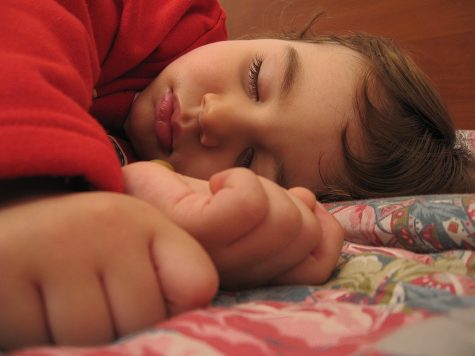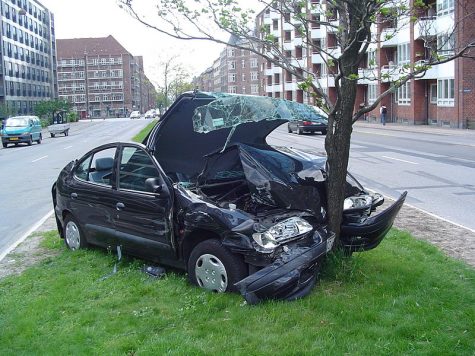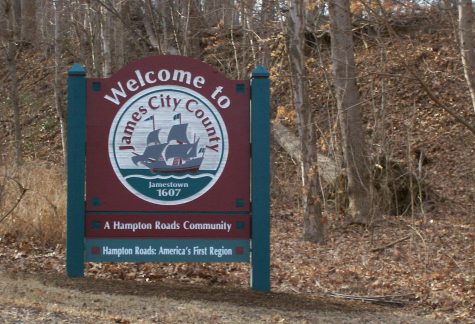Opinion: The School Board Should Change High School Starting Times To 8:30 AM
Amidst the Coronavirus pandemic, some politicians have been calling for school districts and lawmakers to use the controversy surrounding schools reopening as an opportunity to reform and make major changes to the school system. One current problem of profound significance within the modern school system, I believe, is the early starting times of schools. The Williamsburg-James City County Public Schools have been starting high schools at 7:20 a.m. each morning for years. This means that children are waking up as early as 5:45 a.m. in order to account for bus schedules. This absurd decision to start high schools so early, for reasons I will further discuss, is detrimental to the mental and physical health as well as the academic potential of students.

The Center for Disease Control and Prevention says that teenagers aged between 13 and 18 years old need 8 to 10 hours of sleep each night. I surveyed fourteen students who attend Lafayette High School in Williamsburg. Of those fourteen students, they went to sleep at an average time of 11:24 p.m. and woke up at 6:23 p.m. This means that the average student gets seven hours of sleep — one hour short of the minimum CDC recommendation. Although seven hours of sleep may seem like enough for teenagers, it is certainly not, especially given the fact that a person’s mind is still developing in their teenage years. The data from the survey also suggests that nearly 30 percent of students at Lafayette High School get less than 7 hours of sleep on school nights. The data collected seems to be consistent with a 2006 study by the National Sleep Foundation that found that 45 percent of adolescents do not get enough sleep on school nights.
Waking up at 6:00 a.m. in order to be at school by 7:15 a.m. sounds reasonable to the average adult. We could indeed blame teenagers for deciding to go to sleep so late in the evening, thus contributing to the prevalent lack of sleep in our public schools. However, this “decision” to go to sleep at later times is not the fault of their own. Students across Williamsburg go to sleep at later times for numerous reasons. For example, Lafayette High School junior Bell Douglas has dance practice after-school and does not get home until late at night. “I get home from dance really late and I want to take a shower and chill before I go to sleep,” she says. Douglas also stated, “The latest class I have, I usually get home at 9:20 [p.m.].” Students do not just go to sleep late because of afterschool activities and homework, though. Research has found that teenagers are biologically programmed to be “night owls,” having a sleep-wake cycle of about 1 to 3 hours in front of that of adults.*
It is abundantly clear that our students do not get enough sleep because of our early school start times. However, why does that matter? The American Academy of Pediatrics stated that middle and high schools should not start before 8:30 a.m. in the morning in order to satisfy the needed 8-10 hours of sleep that adolescents need in a 2014 publication. A lack of sufficient sleep on a consistent basis leads to a weakened immune system, an increased risk to develop cancer, Alzheimer’s disease, abnormal blood sugar levels, cardiovascular disease, obesity, and congestive heart failure.* Further, inadequate sleep contributes to anxiety, depression, and suicidal thoughts.* This is especially worrying because adolescence is the phase of life most susceptible to developing mental illnesses.

There are two types of sleep; non-rapid eye movement sleep (NREM sleep) and rapid eye movement sleep (REM sleep). NREM sleep occurs during the first part of the night. During NREM sleep, your body builds bone and muscle, repairs and regenerates tissues, and strengthens your immune system, according to Cleveland Clinic. REM sleep, on the other hand, occurs during the early morning, which is, therefore, more often deprived of students due to early school starting hours. In the 1960s, a group of researchers deprived young adults of REM sleep whilst still allowing them to have NREM sleep for a week.* The results were clear within just three days; participants were anxious and moody. They began expressing signs of psychosis, hallucination, and paranoia. The experiment concluded that, as put by Dr. Matthew Walker in his book Why We Sleep, “REM sleep is what stands between rationality and insanity.” Dr. Walker went on to further write, “It is a lack of REM sleep — that critical stage occurring in the final hours of sleep that we strip from our children and teenagers by way of early school start times — that creates the difference between a stable and unstable mental state.”
A study of 5,000 students in Japan found that individuals who slept for longer obtained better grades overall.* Studies have shown that children who sleep longer go on to develop higher IQs.* In Edina, Minnesota, schools formerly started at 7:25 a.m., similar to our 7:20 a.m. start time. The average verbal SAT score of top-performing students during that time was 605. The average math SAT score was 683. The next year, Edina switched their school start times to 8:30 a.m. — a change of over an hour. That year, the average verbal SAT score of top-performing students was a whopping 761. The math SAT scores were an astounding 739. That is a net profit of 212 points, merely due to a one-hour shift.* Several other counties and cities across the United States have done the same as Edina and have seen the same results.
Another benefit of later school start times is decreased risk of substance and alcohol abuse. Later school start times subsequently mean later release times. The time between students getting home in the late afternoons and parents coming home from work in the evenings is the prime time for smoking, involvement in crime and gangs, and abuse of drugs and alcohol. By ending schools later in the day, this “danger window,” as Dr. Matthew Walker describes it, is drastically reduced.
It may be argued that it is essential that schools start early in order to account for afterschool sports and extracurricular activities. It is certainly important that students get home in time for dinner and before the day is consumed by night. However, these afterschool events only last between one to two hours on any given day. If schools were to start at 8:20 a.m. in the morning, they would get out by 3:20 p.m. In the fall and spring, this would certainly give sports and other activities enough time in the afternoons to end their events before dusk. Though it may not always be the case for winter sports, it is important to remember that most winter sports are hosted inside and accompanied by indoor lighting. If you still consider the ending of sports in the afternoon of greater importance than adequate sleep, consider this: in a study by the Journal of Pediatric Orthopedics, researchers found that adolescent athletes who got less than eight hours of sleep each night were nearly two times as likely to be injured.

Further, whilst teenagers driving in the dark after practice during the winter months is a genuine concern, drowsy driving carries a much higher risk; according to a study conducted by the AAA Foundation for Traffic Safety, drowsiness is a factor in 9.5 percent of car crashes. In fact, a study by JAMA Internal Medicine found that being sleepy behind the wheel is almost as risky as drunk driving. When the Mahtomedi School District in Minnesota pushed their school start time from 7:30 a.m. to 8:00 a.m., they found that there was a reduction in traffic accidents involving teenagers by an astonishing 60 percent.* More dramatically, Teton County in Wyoming moved their school start time from 7:35 a.m. to 8:55 a.m. and saw a remarkable 70 percent reduction in teenager-involved traffic accidents.*
Another argument made is that changing the school start time will result in unfavorable bus schedules and may lead to an increased shortage of bus drivers on top of the shortage that Williamsburg-James City County Public Schools already has. This is a genuine concern — but there is a profoundly simple solution. As previously mentioned, adolescents naturally go to sleep later in the night. However, the opposite is true for elementary schoolchildren. A 2014 study suggests that younger children naturally fall asleep earlier in the evening as opposed to older children. Additionally, younger children often have fewer afterschool activities than high schoolers, which provides them with a much more flexible schedule to sleep earlier in the night. With that in mind, would it not be a better idea to switch the later start times of elementary schools with the early start times of high schools, therefore removing any effect on bus schedules?

The idea of forcing teenagers to wake up at 6:00 a.m. each morning in order to get to school by 7:20 a.m. for five days a week is utter insanity. More sleep for our students will lead to higher graduation rates, higher test scores, better grades, better health, lower depression rates, and a decreased risk of chronic illnesses and injury. In order to enrich the health of our children and secure their academic potential, it is vital that the Williamsburg-James City County School Board changes our high school start time to later in the morning at times such as 8:30 a.m.
*Information and statistics derived from Why We Sleep by Matthew Walker.



